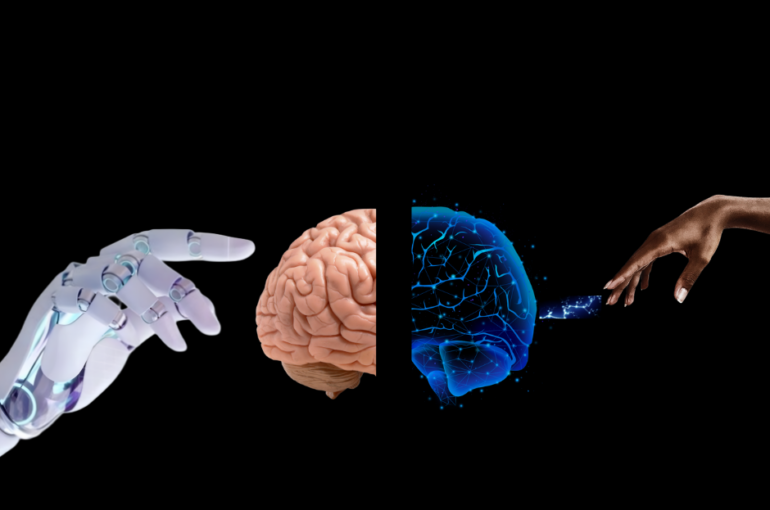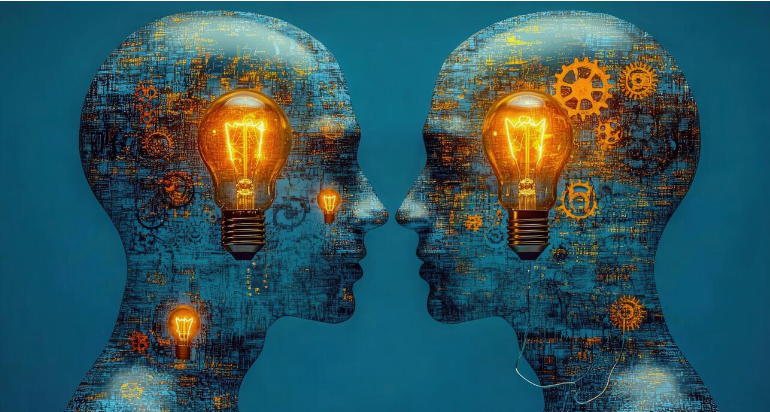How AI is Transforming Hurricane Preparedness in the Caribbean
When the winds start to rise and the sea begins to turn, most people think of nature as the ultimate force. Yet the real force shaping our ability to survive hurricanes today is intelligence, artificial intelligence. AI is helping us understand, prepare for, and recover from storms in ways that were unimaginable a decade ago. The technology does not control the weather, but it helps us see it with new eyes and respond with greater precision.
Understanding the Power and Pattern of Hurricanes
A hurricane is a vast rotating storm born over warm ocean waters. It thrives on heat, building power as it spins, until it can uproot trees, destroy homes, and flood entire towns. Each year, the Caribbean watches the Atlantic with anxious attention. What makes hurricanes so difficult is not only their strength but also their unpredictability. Even a few hours of delay in forecasting can mean the difference between safety and catastrophe.
This is where AI changes everything. Unlike traditional forecasting models that depend on fixed equations and slower computation, AI can learn from millions of data points in real time. It can read patterns hidden in satellite images, temperature maps, and atmospheric pressure readings. It does not tire or overlook details. It adapts as the storm evolves.
Predicting the Unpredictable
The art of hurricane prediction has always been a race against time. Meteorologists collect data, run simulations, and hope to spot a turning point before it happens. AI speeds up that race. By training algorithms on decades of hurricane data, we can now anticipate where a storm might shift, how fast it will grow, and which regions are in the path of greatest risk.
Imagine an AI model watching the Caribbean Sea every second, learning from subtle temperature differences, wave heights, and wind currents. It sees what humans cannot. During Hurricane Melissa in 2025, these kinds of models helped track the storm’s rapid intensification hours before it struck Jamaica. That insight allowed authorities to issue stronger warnings and prepare coastal defences earlier. It may not have stopped the storm, but it bought time,and time saves lives.
Preparing Smarter with AI
Prediction is one part of the story. Preparation is another. AI helps governments and communities move from reaction to readiness. For instance, AI systems can identify which areas are most likely to flood, which hospitals need backup power, and which routes are safest for evacuation.
A good example is how AI supports supply logistics. When a hurricane warning is issued, supplies must be pre-positioned. Trucks, fuel, food, and medical kits all need to move fast. AI tools can calculate the safest routes, factoring in road elevation, rainfall, and population density. This ensures that aid reaches the right places before they become inaccessible.
In the future, city planners could use AI simulations to run virtual hurricane drills. By testing different response plans digitally, they could see how traffic flows, how shelters fill, and how communication lines hold up. This kind of foresight turns emergency planning into a living system that learns and improves.
The Role of Agentic AI in Measuring Perception and Risk
At Maestro AI Labs, the Section Lab team recently conducted an analysis using Agentic AI to model threat perception across Jamaican parishes. The results revealed something powerful about human psychology during crises.
According to the study, Manchester scored the highest threat perception at 100, followed closely by Saint Elizabeth at 98, while Saint Mary and Saint James ranked at the lower end with 71 and 74, respectively. The data showed that inland parishes, though less exposed to direct coastal winds, felt a heightened sense of risk due to flooding and concerns about isolation. Coastal parishes like Portland, Saint Ann, and Saint Thomas also scored highly due to their exposure to storm surge and historical damage.
These findings, visualised in the Hurricane Threat Perception Score chart, highlight the emotional and cognitive side of preparedness. It is not just where the hurricane hits, but where people believe it will hit hardest that shapes behaviour. Agentic AI enables decision-makers to merge data on actual threats with perceived risk, guiding communication strategies that motivate real action.
You can read more about that analysis here: Agentic AI and the Future of Storm Preparedness.
From Forecast to Fieldwork: AI During the Storm
When the hurricane finally hits, AI continues to work. Drones equipped with AI-powered cameras can map flooded areas in minutes, helping emergency teams locate trapped families and blocked roads. These images are analysed by computer vision models that detect collapsed buildings, downed power lines, and impassable bridges.
During Hurricane Melissa, for instance, AI-enabled mapping tools were able to identify major disruptions to power lines across central Jamaica within hours of landfall. Utility companies used that data to deploy repair crews strategically rather than relying on scattered reports.
Even social media becomes a lifeline. AI systems can scan thousands of posts and messages to identify distress signals, locate stranded people, and estimate the resources needed. A simple message like “water running low in Mandeville” becomes part of a larger intelligence map that guides relief operations.
Recovering Faster with AI
After a storm, the focus turns to recovery. Here, too, AI helps governments and organisations rebuild faster. Predictive models can assess how long power outages will last and which areas should be prioritised for repair. Insurance companies use AI to verify claims by comparing before-and-after satellite imagery, speeding up compensation and reducing fraud.
AI can even support emotional recovery. Chatbots and virtual assistants trained for post-disaster communication can guide families on how to apply for aid, locate missing relatives, or find temporary housing. By handling the flow of basic questions, they free up human responders to focus on urgent needs.
Lessons from Hurricane Melissa
Hurricane Melissa struck Jamaica and neighbouring islands in October 2025 as a Category 5 storm. It brought winds over 160 miles per hour and torrential rain that led to flash floods and landslides. Thousands lost power, water, and access to communication. Reports indicated over 530,000 Jamaicans were without electricity, and at least 50 people across the Caribbean lost their lives.
Had more AI-based systems been deployed at scale, several areas might have seen reduced losses. Power grid simulations could have predicted weak points and allowed pre-emptive shutdowns. Flood models could have directed sandbagging and resource deployment earlier. Public messaging, guided by AI analysis of social sentiment, could have improved compliance with evacuation orders.
The lesson is clear: technology alone cannot stop a hurricane, but it can prevent a natural disaster from becoming a human catastrophe.
Real-World Use Cases for AI in Hurricane Preparedness
Predictive Weather Modelling: AI can process live data from satellites, buoys, and radar systems to forecast storm paths more accurately and earlier.
Evacuation Route Optimisation: AI can simulate traffic and suggest the best exit routes, reducing congestion and improving safety.
Resource Allocation: Before the storm, AI systems can decide where to store fuel, food, and medicine based on population data and predicted impact zones.
Infrastructure Analysis: AI can evaluate the resilience of bridges, roads, and power lines to prioritise upgrades and emergency reinforcement.
Post-Disaster Damage Mapping: AI-driven drones and imagery tools assess structural damage and provide real-time updates to command centres.
Public Communication and Behaviour Analysis: Natural language models can scan online discussions to detect misinformation and sentiment, ensuring people receive reliable updates.
Story Example: The Town That Listened
In one small coastal town in Saint Elizabeth, local officials ran a pilot program using AI-enhanced risk alerts. Instead of sending a single weather warning, the system sent personalised updates through text messages and WhatsApp, each tailored to household location and vulnerability. When Hurricane Melissa approached, over 90 percent of residents evacuated early. Their community centre later served as a relief hub because it stayed structurally intact. While other areas suffered major losses, that town saw no fatalities. It was not luck. It was preparation informed by intelligent systems and human trust.
The Road Ahead
The next stage in hurricane readiness will combine human experience with digital intuition. AI will not replace meteorologists, engineers, or first responders, but it will amplify their capabilities. The challenge lies in ensuring all Caribbean nations have access to these tools.
Data sharing, infrastructure investment, and education are key. Governments must collaborate with AI researchers and private sector innovators to ensure equitable access. Preparedness is not only a matter of technology but of mindset. The more people understand what AI can do, the faster it can help them.
Summary of Insights from the Threat Perception Study
The Section Lab findings revealed that perception can be as powerful as prediction. Communities that feel vulnerable are more proactive in preparation. Those that feel distant from risk tend to delay action, even when objective data says otherwise. AI allows us to close that gap by integrating emotional readiness into policy design. It reminds us that science and psychology must move together.
Frequently Asked Questions
What is a hurricane?
A hurricane is a powerful tropical storm system that forms over warm ocean water. It has strong winds, heavy rainfall, and a rotating centre called the eye. Hurricanes can cause storm surges, flooding, and widespread destruction.
What does the word hurricane mean?
What does the word hurricane mean?
The term comes from the word “Huracán,” used by the Taíno people of the Caribbean to describe the god of storms. It later entered Spanish and English with the same meaning.
What is AI?
AI stands for artificial intelligence. It is technology that allows computers to learn from data, recognise patterns, and make predictions. In disaster management, AI analyses weather data, satellite images, and social information to guide decisions.
What is Hurricane Melissa?
Hurricane Melissa was a Category 5 hurricane that hit the Caribbean in October 2025, bringing catastrophic wind, rain, and flooding. It caused heavy damage in Jamaica, Haiti, and Cuba.
Where did Hurricane Melissa hit in Jamaica?
Melissa crossed Jamaica’s southern coast, affecting Saint Elizabeth, Manchester, and Clarendon most severely. It caused landslides in the interior and severe flooding along the coastal plains.
How many people died in Jamaica from Hurricane Melissa?
Early reports confirmed multiple fatalities in Jamaica, contributing to an estimated 50 deaths across the region. Final numbers are still under review.
How long do hurricanes last?
Most hurricanes last from several days to two weeks, depending on their movement and environmental conditions.
What happens during a hurricane?
Heavy rain, intense wind, and coastal flooding occur. Infrastructure may collapse, trees fall, and power lines fail. The eye passes through, offering a brief calm before conditions worsen again.
What is a hurricane disaster?
A hurricane becomes a disaster when it overwhelms a community’s capacity to respond or recover. It is not only the storm itself but the aftermath of loss, damage, and displacement.
Has Jamaica ever had a hurricane before Melissa?
Yes, Jamaica has experienced several major hurricanes, including Gilbert in 1988, Ivan in 2004, and Dean in 2007. Melissa, however, was among the most powerful in recent history.
Why is a hurricane considered a disaster?
Because it brings cascading effects: floods, infrastructure collapse, economic loss, and sometimes loss of life. The term “disaster” reflects both physical and human consequences.
How can AI help prevent future disasters?
By improving forecasts, strengthening logistics, analyzing social data, and ensuring faster recovery. AI provides foresight where uncertainty once ruled.
About StarApple AI
StarApple AI is the first Caribbean A.I company. Our team brings together over 100 years of combined expertise in science, finance, compliance, content creation, government, and entrepreneurship. We help organizations move from potential to precision through data-driven innovation. Our mission is to empower the Caribbean with technology that is ethical, effective, and globally competitive. StarApple AI transforms regional intelligence into global influence.
Other articles
-

Is Artificial Intelligence the same as Machine Learning?
In the rapidly evolving world of technology, terms like Artificial Intelligence (AI) and Machine Learning (ML) are often used interchangeably. However, while they are closely related, they are not the same thing. In this blog post, we’ll dive into the intricacies of AI and ML, unravel their differences, and explore how they are shaping our […]
Enroll -

Who Are the Big Four in Artificial Intelligence and What Caribbean Businesses Can Learn from Them
The Big Four of Artificial Intelligence: Lessons for Caribbean Business Leaders Explore how the world’s leading AI companies, OpenAI, Google DeepMind, Anthropic, and Meta, are shaping the global intelligence economy and what Caribbean organizations can learn from their strategies. Introduction: Learning from the Giants Artificial Intelligence is the new frontier of global competition. Behind its […]
Enroll -

The Future of Artificial Intelligence in the Caribbean Economy
The Future of AI in the Caribbean Economy: Building Intelligence, Innovation, and Independence Discover how artificial intelligence can transform the Caribbean economy. Learn how applied AI can enhance productivity, regional innovation, and global competitiveness for Caribbean nations and businesses. Introduction: A Region on the Edge of Reinvention The Caribbean stands at a turning point. For […]
Enroll -

What Type of AI Powers ChatGPT and Other Generative Systems
The AI Behind ChatGPT Explained: Understanding Generative Systems and How They Transform Business Explore the science and strategy behind ChatGPT and other generative AI systems. Learn how large language models work, what they mean for business, and how organizations can harness them responsibly. Introduction: A New Kind of Intelligence Artificial Intelligence once focused on recognition. […]
Enroll

